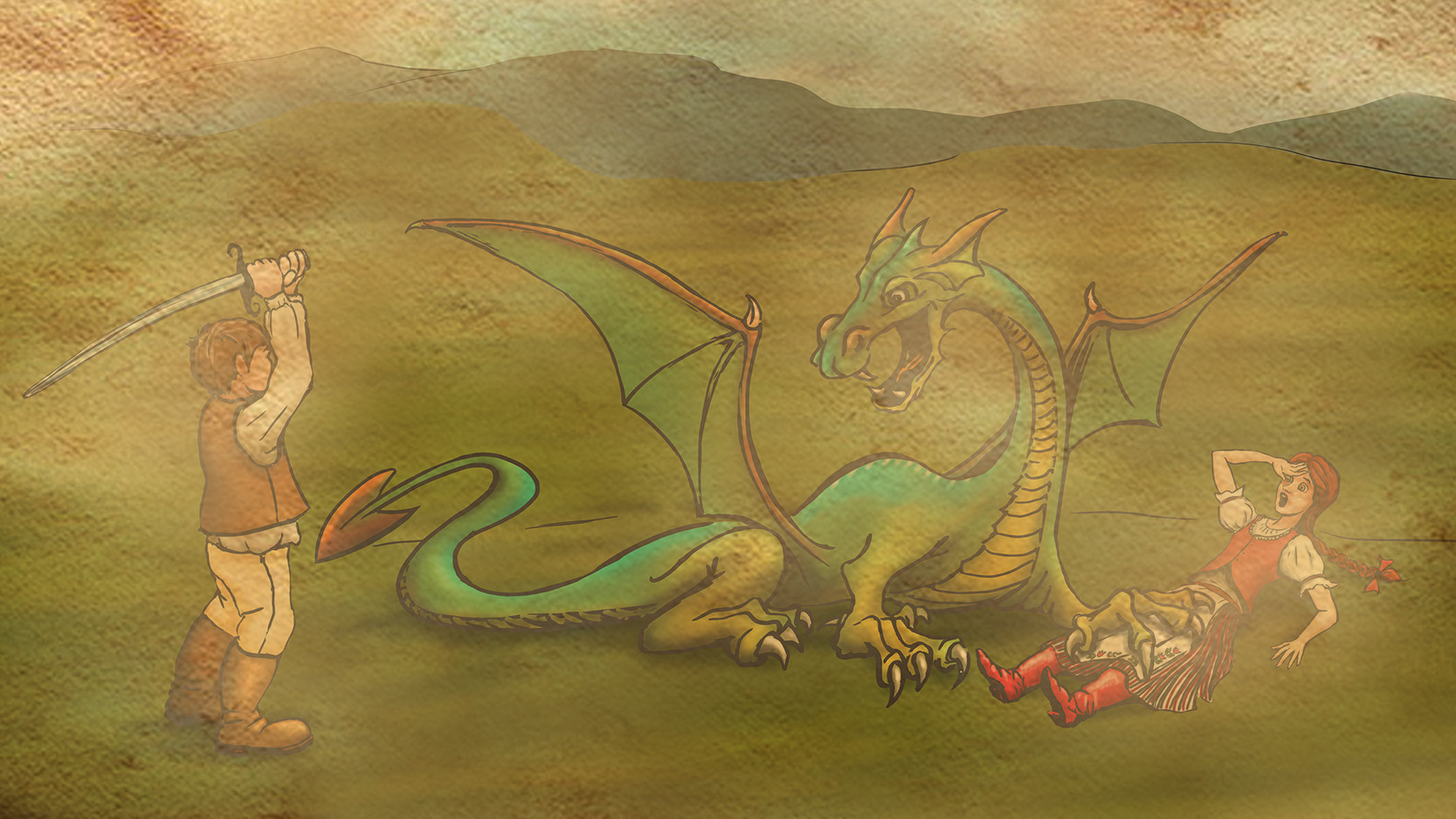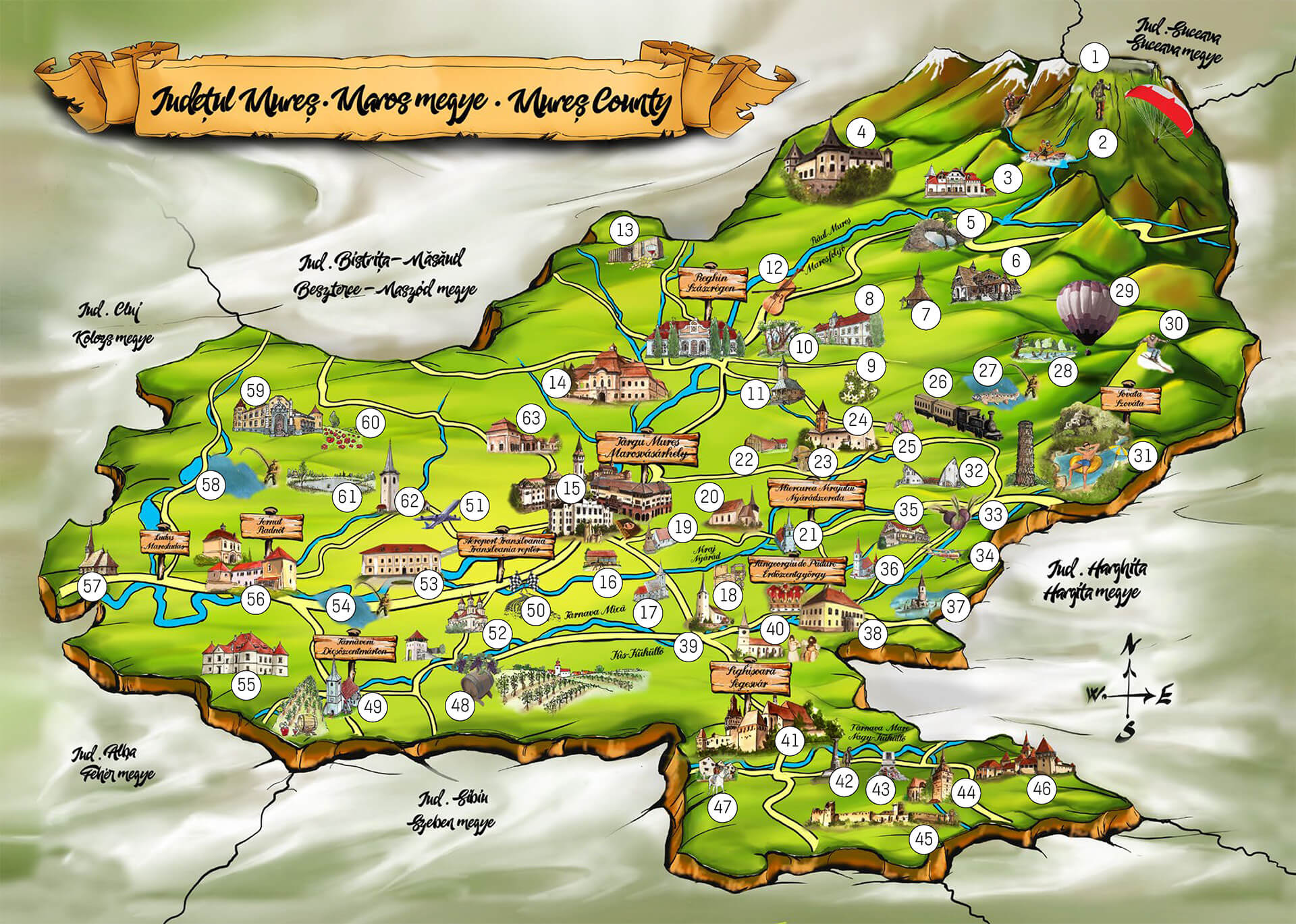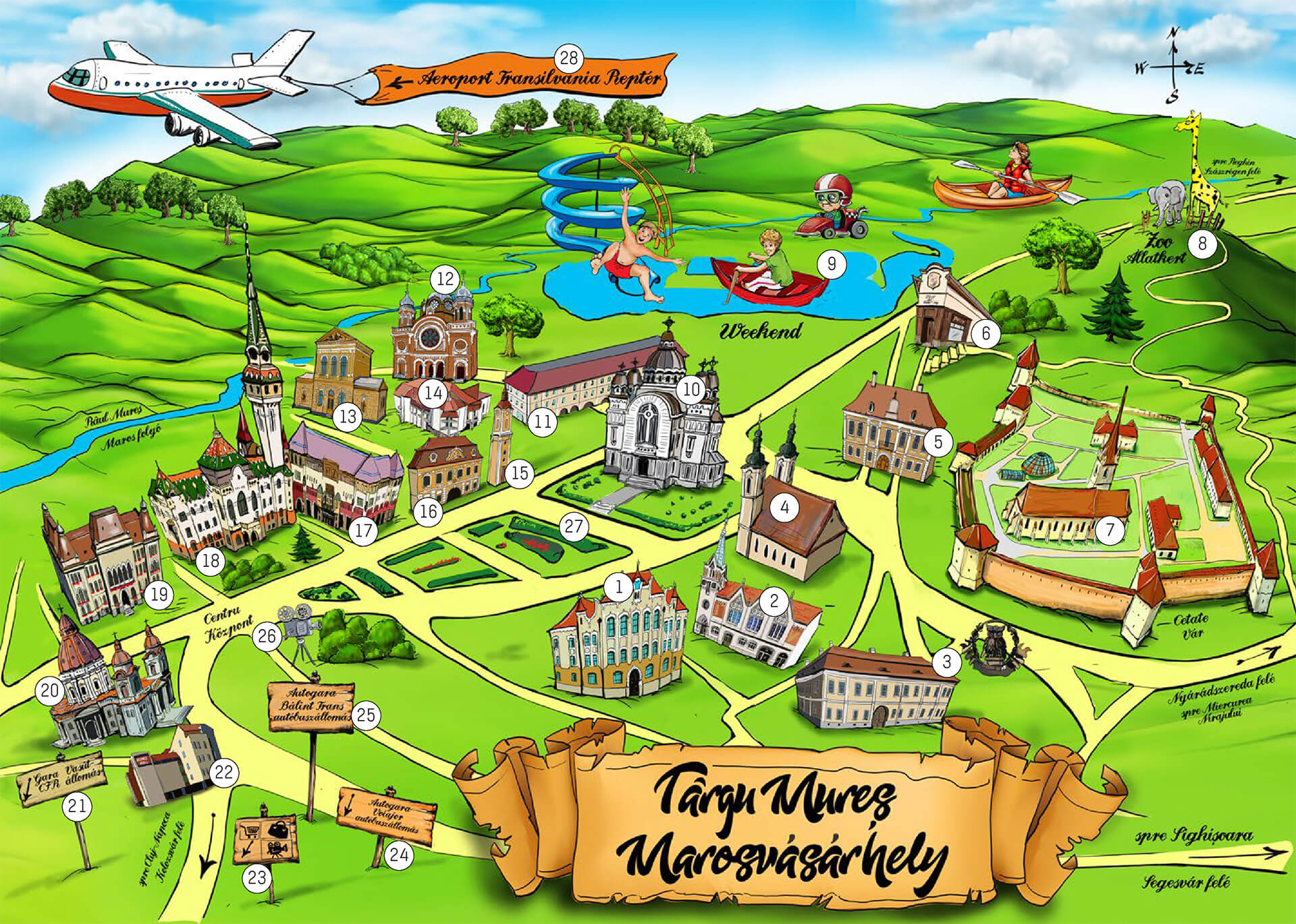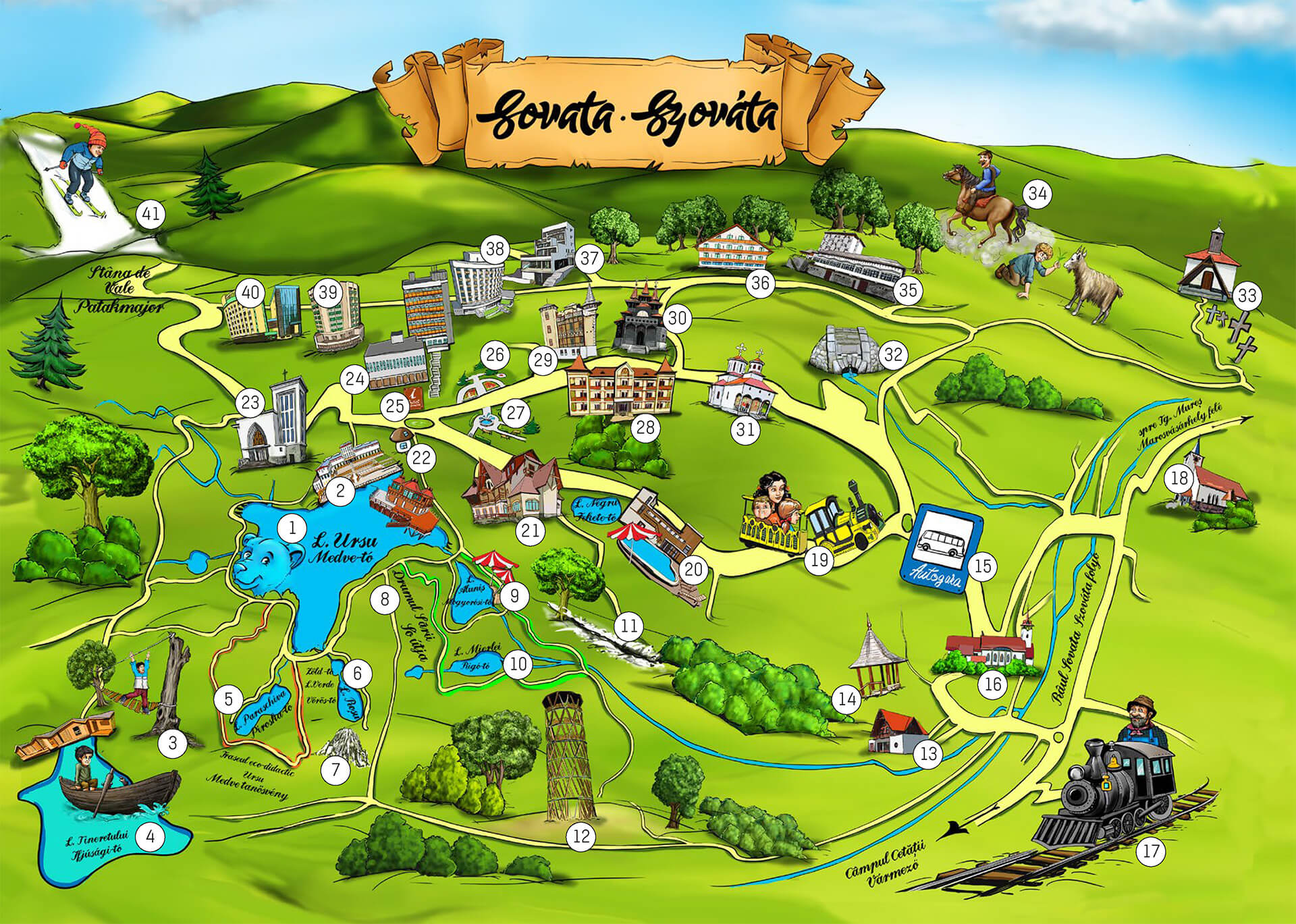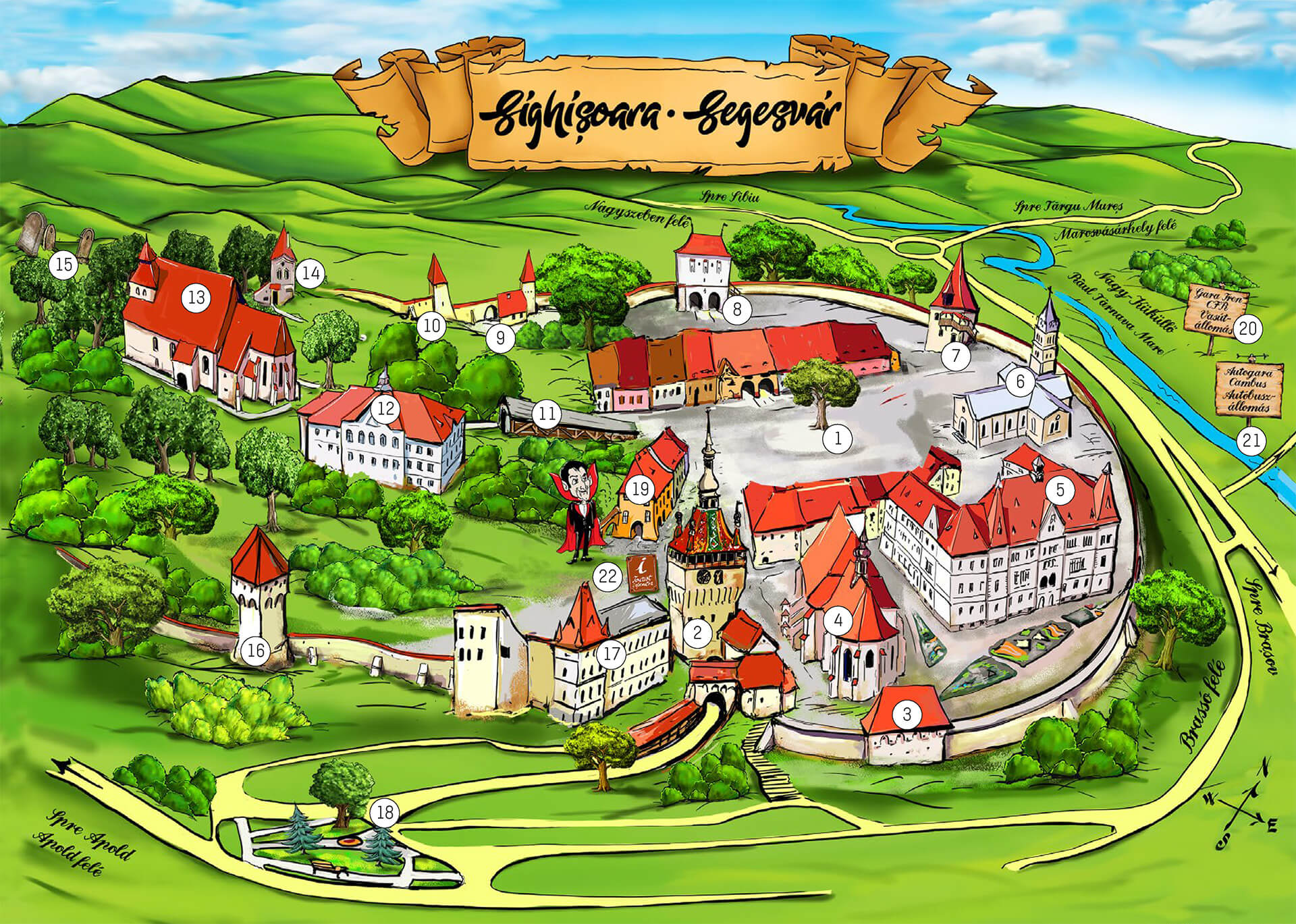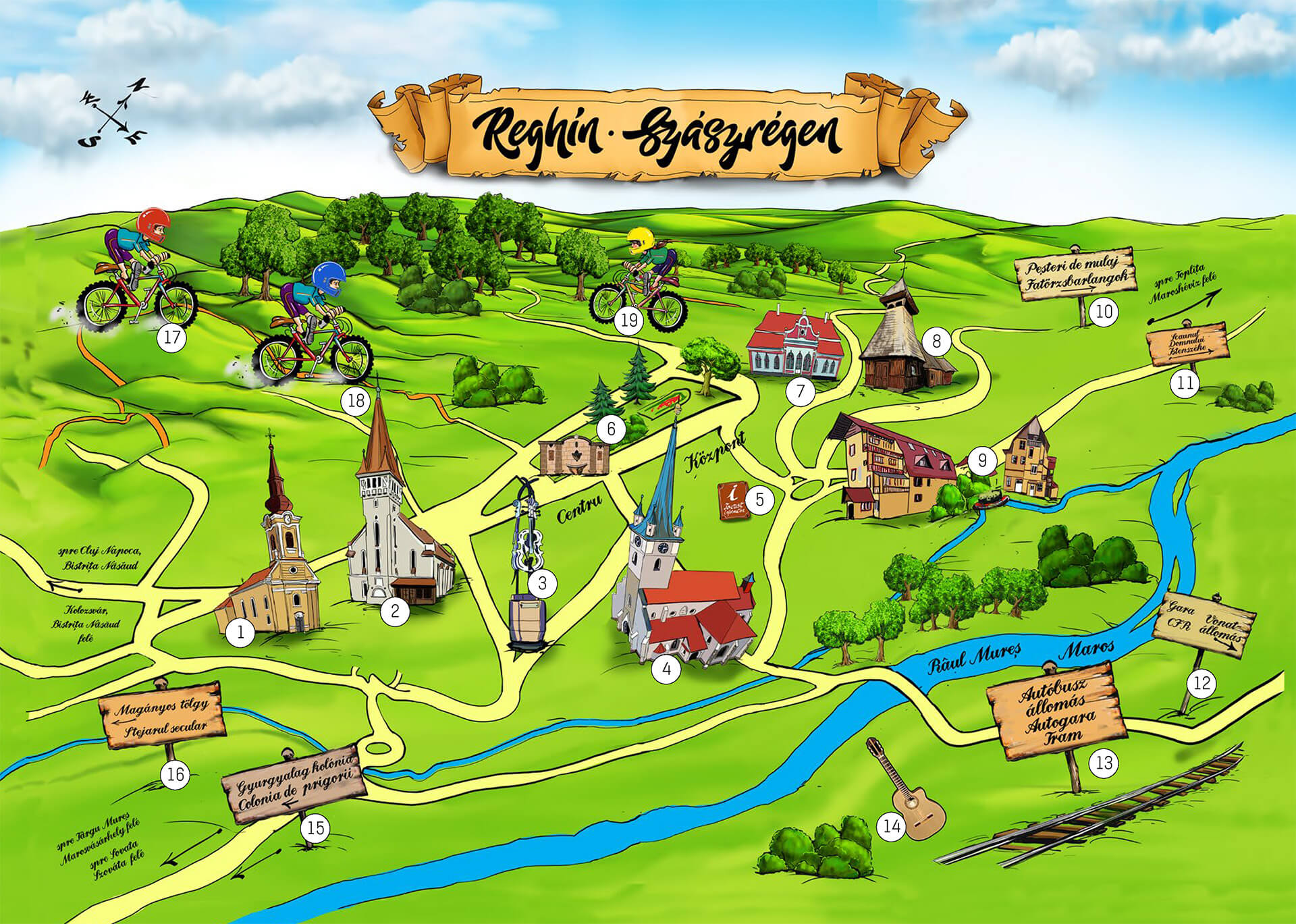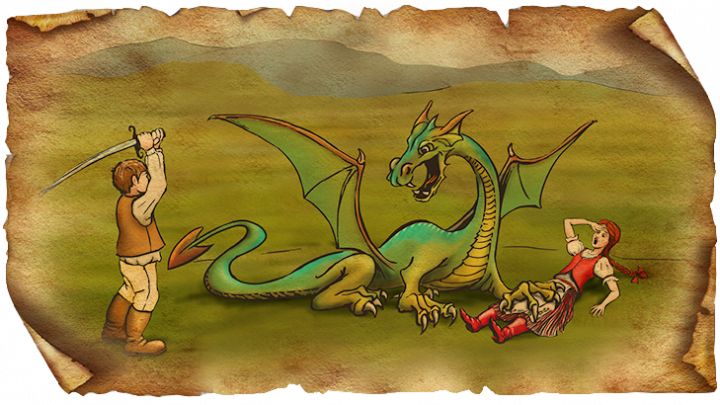
The Dragon’s Source - Jacodu
Next to Magyarzsákod rises the rocky peak named Várutahegyese / Castle Hill, its bare peaks emerge from the small valley in which this settlement rests. A source called Dragon’s source springs from the side of the mountain.According to the folk legend, the dragon lived in the swamp below the mountain. He was strong, dumb, and every year he demanded a virgin lass from the locals of the village in exchange for leaving them in peace. Thus, the people were afraid as long as it was the turn of the fiancé of a handsome knight, the ancestor of the Bethlen family from Bún, but the valiant wasn’t afraid and started as David to go to Goliath, who lived in the swamp. His mistress was afraid, asked him to stay, but he was intransigent. He challenged the evil dragon, and before it regained consciousness, he ran his spear into its heart, and then carried away the beast's head to Zsákod.Magyarzsákod, a small settlement not far from Segesvár / Sighisoara, at the source of Zsákod brook, did not receive its name from this hero, but from the fact that it stretches into the surrounding high hills as a bag (zsák = bag). A fabulous sight appears in front of the traveler, looking around from the Castle Mountain. Historical sources and Balázs Orbán mention a ruined fortress, but its exact location on these highlands has not yet been identified. "There is no trace of it here, though the plow (because the high hilltops in this area are also ploughed) uncovered a lot of tile pieces," writes Balázs Orbán.The inhabitants of the village converted to Unitarian faith during the Reformation, but two centuries later the Horváth family built a Catholic chapel, which was extended to church in 1826. Beside the Unitarian church rebuilt in the 19th century, there is a belfry where the greatest bells of the surroundings can be seen. The two bells were made by Frigyes Hönig in Arad in 1921 and 1936.Sándor Hegedüs (1847–1906), the famous son of Zsákod, publicist, economist and financial expert who was a trade minister at the time of dualism, and former parliamentary deputy of Kolozsvár / Cluj-Napoca. In his honor, a memorial room was set up in his home village, which can also be visited.Even the cut head of the evil dragon cannot be seen, you can leave Zsákod with the experience of the picturesque scenery and spiritual journey back to historical times.
Learn more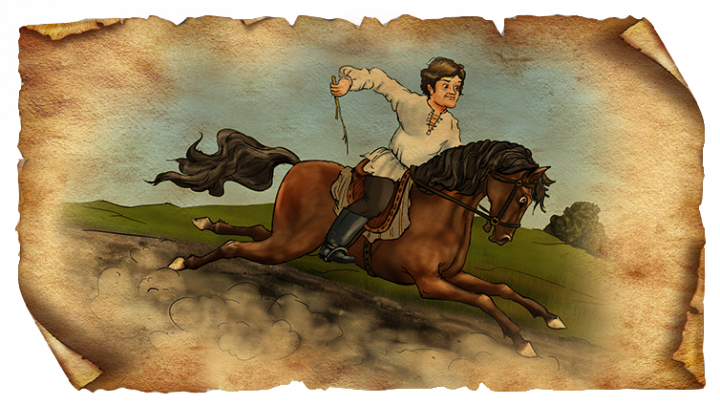
Legend of the rider from Apold
The small village next to Sighisoara is guarded by the fortress church. The village is decorated with beautiful Saxon houses recalling the late Middle Ages and the New Age, which will definitely make visitors stop. The village lies in the valley of the Segesd stream and is not identical with the settlements between Nagyszeben / Sibiu and Szászsebes / Sebeș, Nagyapold / Apoldu de Sus and Kisapold / Apoldu de Jos. According to the legend, the village was named after a rider centuries ago. The first version of his name was said to be Trapold (it bears the same name in German today), as a rider was on a horse named Old. When he began to rush his horse to gallop, he shouted, "Trapp, Old! Trapp, Old! ”- this is how the small village got its name. However, it is much more likely that the Saxons who moved here from Oppelshausen in Germany called the settlement Apoldia, which shortened over time to its present form. Apold was famous not only for the origin of its name and the Saxon houses, but also for the Gothic fortified church, which stands on a hill in the middle of the village. In the 13th century a basilica without a tower stood here, and the Saxons built the Gothic church in the 15th century, with a bell tower. The double wall ring and the portholes in it suggest that the facility was used for defense purposes - there are other portholes on the bell tower with wooden circular gallery. The gate tower is called Haferturm, that is the Zabos Tower, the other is called Wisserturm, namely the White Tower, and on the gate the year 1529 can be read. It was renovated even twice in the 17th century, and in 1723 a clock was placed in the bell tower, where a wooden sculpture appears every hour. The organ placed above the altar of the Apoldi Fortress was created by the organ builder Johann Theiss in 1821. As for accommodation, old Saxon houses in Apold were transformed into pensions and guesthouses - their operators tried to preserve, or even expand, the typical tools, furniture and atmosphere of the old houses. Some houses were damaged over the centuries, even though one feels like moving into this beautiful village. Especially if you taste the special cottage cheese considered as local specialty, which is served with traditionally cooked eggs and butter by the local people. If we walk around the walls of the castle or on the streets of Apold, we can see a rider coming, who maybe does not resent if we ask him to encourage his horse in the same way as the rider did according to the legend.
Learn more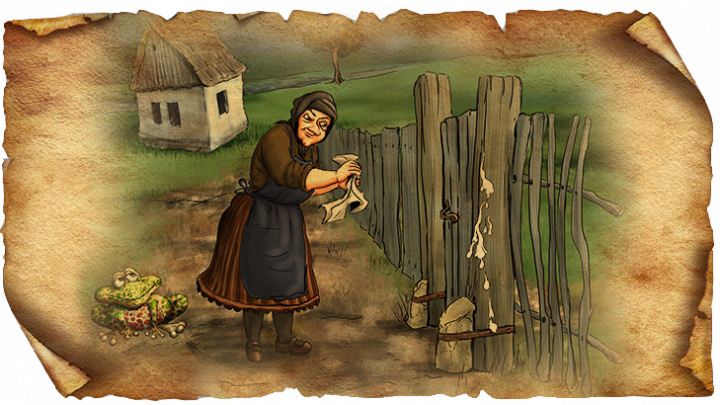
The land of witches - Bún / Boiu
The village of Bún / Boiu near Fehéregyháza / Albești is made up of Small and Large Bún. The folklore believes that witches once lived in these very old settlements - and in the nearby Küküllősárd / Șoard settlement, as well… There is a great number both of witches and caves in the area - not far from these mysterious caverns, one of the last battles of the 1848-49 Revolution and War of Independence took place on the field in Fehéregyháza. The folk tradition says about these non ordinary caves that they are groundless: if someone throws a stone into the cave's mouth, it will disappear forever. The locals keep telling a story that a dog chasing a rabbit rushed into such a duct and its master could no longer see it. In fact, they also knew that the depth had swallowed a cow together with the chariot, and girls had disappeared from the village - the inhabitants of the region suspect they had been lost in such caves, as well. The local witches were known to be extremely weird creatures by the people from the settlements Bún and Sárd. It was believed that, they had regularly stolen the milk of the locals' cows with their secret practices, and the farmers noticed much of the telling signals after a long time. Sooner or later, all the witches were unveiled: the villagers noticed a woman-like figure, who squeezed milk from the corners of her kerchief, and another made her own pet and helper, a toad underneath the udder of the cow, so she entranced the animal. There were others who swirled a cyclonic storm on the field, thus taking the shepherd far away to take the sheep milk until he returned. Over time, when the villagers were aware of these practices and were sick of being mocked by the witches, they found many rituals to protect their cows from them. They considered effective to place a dog head underneath the manger or, if they started to utter Lord’s prayer, then stabbed the fork four or five times into the floor, thus defeating the malicious intent. Since there are no witches in the region today - at least the locals do not tell stories about them today - tourists do not have to be afraid from the whirlwind, they can go on a tour. Small villages can be travelled through by foot or by bicycle in good weather. The area of Bún and Sárd area was originally inhabited by Saxon settlers, and in 1564 Reformed Hungarians moved to the village, who later converted to the Unitarian religion. Instead of the damaging spirits of folk beliefs, the wind of history touches us at Bún, when we visit the ruins of the once magnificent Bethlen Castle. The noble mansion was built by Bethlen Farkas historian, the 17th-century Chancellor of Transylvania. The building overcame succesfully the storms of the 20th century, and during the decades of communism, the state economic offices of Fehéregyháza settlement were located there. In the neighborhood of the castle is the river Great Küküllő - after a significant flood in the 1970s, a dam was built near the mansion. By the time the dam was finished, the building became abandoned. From the 1980s onwards, it was gradually destroyed, its doors, windows and beams were carried away. As we move on to the hill called Sárkánykő / Dragonstone, it is recommended to step carefully, so that nobody can be thrown into one of the bottomless pits by the droughty witches.
Learn more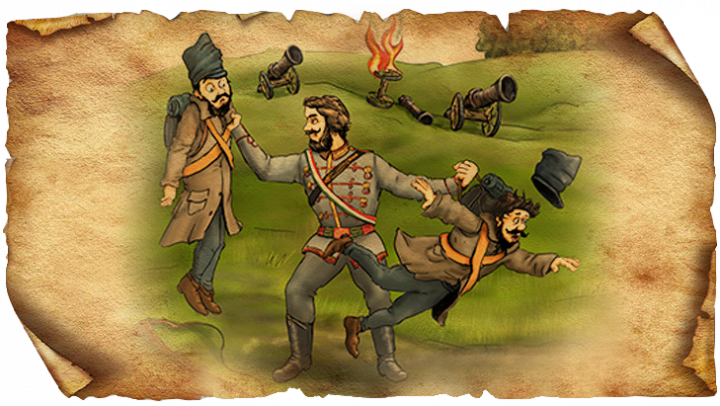
The memory of the 1848-49 Hungarian War of Independence - Albești
The settlement near Sighisoara is a crucially important historical monument. Here, one of the last battles of the 1848-49 Hungarian War of Independence took place, when Sándor Petőfi and the revolutionary Domokos Zeyk died and disappeared here. In honor of the freedom fighters, statues were erected, memorial sites were established at the main sites of the battle, the local Haller estate and the nearby Ispánkút. There are several mass graves in the area. The events of 1849 are mystified today, it is difficult to separate the facts from the more than one and a half centuries-old public stories. But the battle surely happened, and the rebellious Hungarians led by József Bem of Poland were defeated by the Russian army due to their overpower. Not only the disappearance and supposed death of the poet Sándor Petőfi (last seen in Ispánkút, where a restored Petőfi Memorial can be visited today) is related to the Battle of White Church, but also the act of heroism of Domokos Zeyk originating from Transylvania, whose memory lives vividly in the region. The martial, brave soldier served as a lieutenant, then as a captain in the Hungarian War of Independence. In the Battle at Fehéregyháza he played a role in the rescue of General Bem József, and it is also remembered that he asked Petőfi to get on his horse to save the poet, but he resisted. According to tradition, Zeyk had a single sword, and he turned alone against the Cossacks to stop them, and they couldn't defeat him. The enemy wanted to catch him alive, but, being surrounded, he shot himself with his pistol. The incident happened near the Ispánkút, and the brave soldier, like Petőfi, rests in a mass grave in Fehéregyháza. A school center in Székelykeresztúr is named after him, street bears his name in Budapest. The memory of the noble Haller family and the former castle are closely related to the history of the settlement. For centuries, Hallers were the dominant personalities of the region, both economically and culturally. The ten-meter-high turul monument is on their former estate, which was set up in 1899 alongside a presumed mass grave. In addition to the monument, Countess Lujza Haller also established a memorial park and a Petőfi Memorial House in the same period - after many decades, these facilities can still be visited, moreover they were extended with the statues of Sándor Petőfi and József Bem. The small museum is maintained and operated by Sándor Petőfi Cultural Association, the exhibition of the 19th century Hungary, the War of Independence and the last days of Petőfi can be viewed in it, renovated in 2000. For several centuries, the Hallers had also their castle in Fehéregyháza, which was largely destroyed by the middle of the 20th century, but a great number of beliefs, hearsays are attached to it. According to the oral tradition, a tunnel led from the castle to the nearby forest, and another guided to the monastery of Kolostordomb, the site of the present-day cemetery. The tourists visit mainly Fehéregyháza, but there are also several spectacular and characteristic buildings. Saxons, Hungarians, Romanians and Gypsies lived together for centuries in the settlement - the unique architectural monuments of each nation can be seen on the main street. On the main street where Petőfi, Zeyk and Bem once fought for their freedom, the freedom of the Hungarians.
Learn more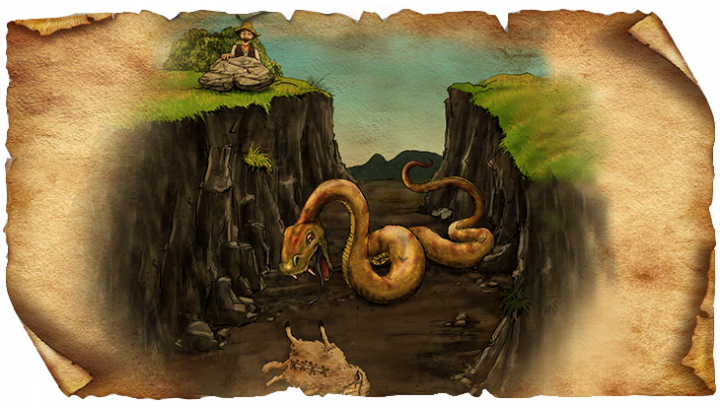
The Legacy of the Bethlens - Criș
The history of the small settlement belonging to the municipality of Dános, southwest of Sighisoara, is combined with the history of the Bethlens, one of the largest and oldest aristocratic families in Transylvania. According to one of the legends, a dangerous cockatrice nested in Keresd, in the cove of the Wendchenberg mountain, claiming every week a bigger animal or a man as a victim. But the Bethlens settled in Keresd, built a castle, and helped the poor many times, especially during the famine in winter. They also put an end to the horror of the cockatrice: the ancestor of the Bethlens was actually a carman who defeated the cockatrice with a trick, and was rewarded with a castle that had originally belonged to the Teleki family. The carman skinned a sheep, and stuffed its fur with the unslaked lime from the nearby lime pit and then sewed it. He threw it to the dragon that eagerly swallowed up the bait, but the lime came to the boil in it and destroyed it. That's why you see a snake in the coat of arms of Bethlenek. In Keresd, this small settlement inhabited by the Saxons in former times, live today Romanian and Gypsy people. Most of the Saxons have emigrated - the Bethlen Castle, which is the most important attraction of the area, still stands in the village of a few hundred people. You need to get off the main road between Medgyes and Segesvár, although the road to the village is in bad shape, the castle's sight, the experience, the time travel compensates the visitor for everything. The Renaissance castle was built in two stages: between 1580-1590, and in the 17th century, when it was flourishing. It was an important fortress also from a military point of view, as bastions were built to it. The castle was built on a rectangular foundation, today having only two of its original four bastions with battlements and reliefs decorations. As the front was approaching in 1944, the Bethlens left the castle, which was nationalized, and it deteriorated during communism. The descendants of the Bethlens were given back the castle in 2007, and in 2014, it was granted for use to the Saint Francis Foundation in Deva led by Csaba Böjte, for fifty years, - so the fortress is restored by the foundation, as a cultural, training and tourist center. In the garden of the castle and in its surroundings, tourists should walk cautiously, as the little descendants of the cockatrice in the Bethlens’ coat of arms can still scare them.
Learn more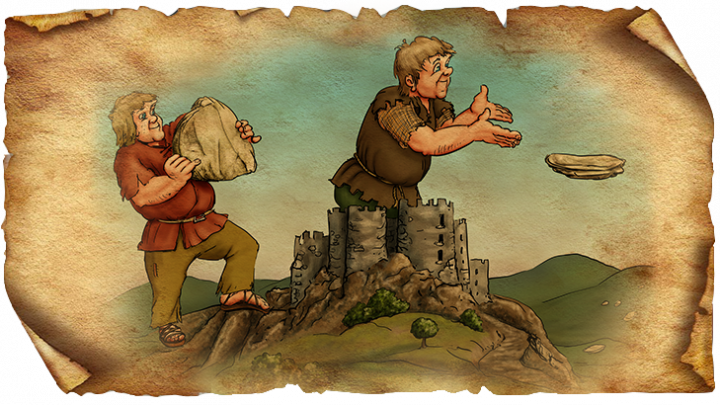
The Giants’ Fortress - Saschiz
Szászkézd / Saschiz is located on the edge of the historical Királyföld / Pământul Crăiesc / Kingsland, 20 km southeast of Sighisoara. The history of the settlement is interwoven by legends and beliefs related to the indigenous people of the region, the giants. Not far from the village, the traces of the castle in which, according to folk tradition, godlike giants lived once, are noticeable even today. The gigantic creatures were very sensitive to someone making noise near the castle. Occasionally, boisterous people were lifted with their coach to scare them, and they were restored to the ground intact to tell others, it was not advisable to disturb the peace of the inhabitants of the castle. Another legend says the giants were throwing large, round, flat stones on the surrounding hillside, but people gathered them and paved the streets of the settlement with them. The locals are still happy to tell you about the giants of the castle today, but the true story of the fortress is almost as exciting – the findings explored by the archaeologists are probably prehistoric buildings built around 2500-1800 Cr. It is. The Giants’ Castle could serve defense purposes for centuries. Near the settlement there was a fort with six bastions called Peasant Castle, which was probably erected in the 13th century - its ruins can be visited. There is also a belief related to the Peasant Castle that a sixty-meter deep well in the fortress leads to a tunnel system. The myth is based on reality, as a flight was already explored under the castle, but there are more according to the locals' assumptions. According to another legend, when building the castle, the merchants crossing Szászkézd were obliged to transport a cart of stones to the castle. Szászkézd today is a very popular tourist destination: the British Crown Prince Charles also visited it regularly in recent years. In the tiny village stands a gothic fortress church as UNESCO World Heritage, with a bastion-like tower with a helmet very similar to the clock tower of Segesvár / Sighișoara. The fortress church was built in 1493, surrounded by a wall in the 16th century. The clock tower was built in 1677, following the pattern of Segesvár. Prior to this, in 1663 Mihály Apafi I. held the Parliament in the church of Szászkézd. In the small village the visitor can find even today the characteristic Saxon building style: the view of the old-old stone gate houses is elevating. The Kézdi Szeklers probably moved from here to the Felső-Háromszék / Upper Three Seats area, as the name suggests, the Saxons were probably moved to their place, but the 20th century, full of events and tragedies, drove out the majority of Saxons. However, they still have a wonderful built heritage and the belief that they can only travel quietly near the Giants’ Castle.
Learn more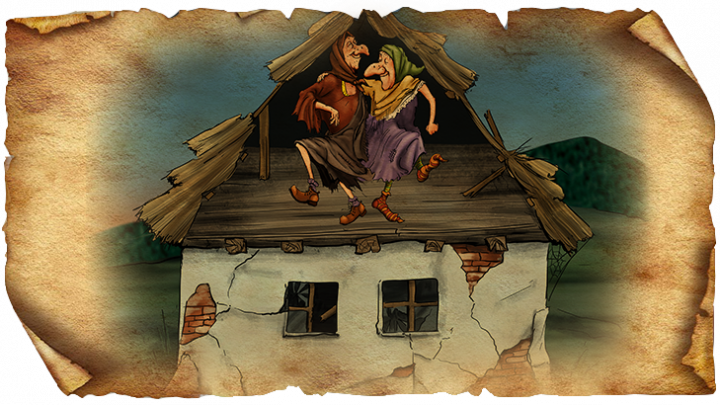
Celebration of Witches - Mureni
The small village is not far from Segesvár / Sighisoara, close to Héjjasfalva / Vanatori. Its Hungarian name was probably derived from the German word Zedriasch. The region was inhabited by the Saxons for hundreds of years trying to revive the rimland of the Szeklerland. Like the neighboring Erked settlement, Szederjes also has old, traditional Saxon houses offering it a distinctive street image. This region, like almost every landscape, has a special place for witches and the associated superstitions in its belief system. The folklore in Szederjes says that the witches regularly revelled in this town. They moved in one of the old, uninhabited houses, from where loud music and cimbalming sounded out on the street every night, around midnight, rousing the villagers regularly. The local men overcame their fear after a while and took stock of the old house from where the sound of music could be heard, and the revellers were nothing but the witches of the region. According to another story, once a man was lodged for a night in a barn in Szederjes. At night he observed that there was a big fire in the yard surrounded by witches in frilled dresses. He had already heard from someone that the ax had to be thrown into the threshold, to make the witches disappear – so he did, and there was silence after the ax chop. If tourists arrive to Szederjes nowadays, they will not meet dancing witches, but sometimes the local small community still organizes dancing parties or vintage balls.
Learn more